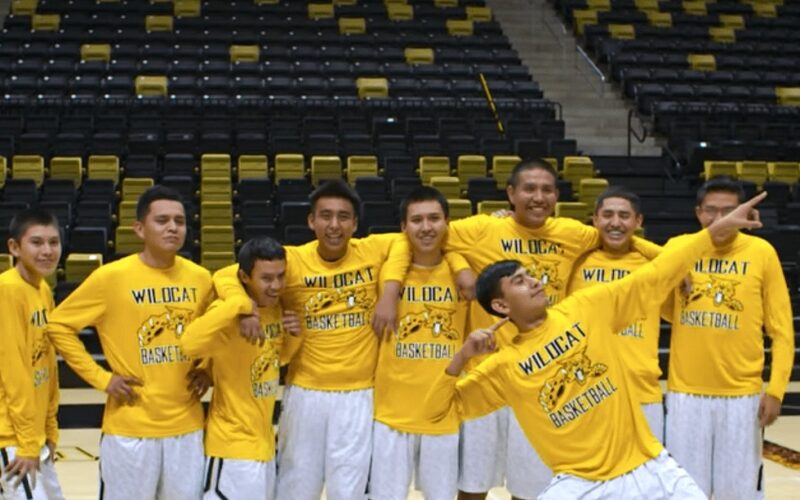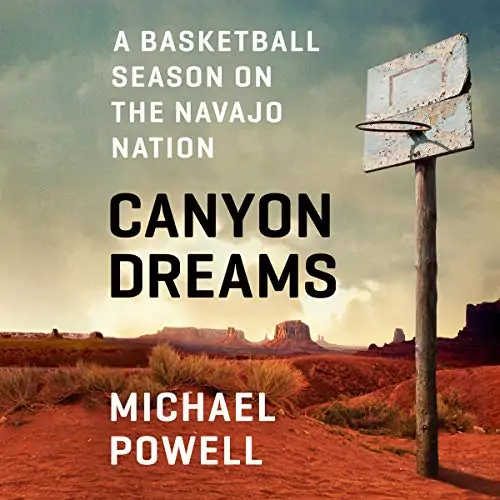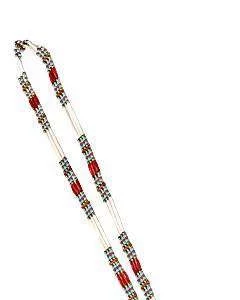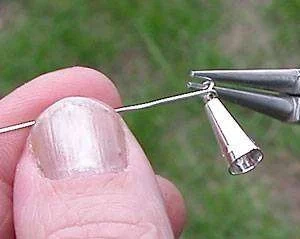Rez Ball is getting a lot more attention, these days, thanks in part to its portrayal in film in literature. It's even getting its own Netflix movie of the same name, produced by Lebron James.
But what exactly is Rez Ball?
What is Rez Ball?
Rez Ball, or Rezball, is shorthand for “reservation basketball.” It is indeed a specific brand of basketball popularized on Native American reservations, but there's a lot more to it than that.
In many ways, Rez Ball is as much a sport as it is a cultural phenomenon. Despite years of federal neglect, Native American reservations have embraced basketball like no other sport and like few other pastimes.
This video from VICE, for instance, gives you a sense of the importance of basketball to tribal members of the Lakota Nation.
Style of Play
One of the things that stands out when you watch a game of Rez Ball is how fast the players get up and down the court.
Michael Powell, author of Canyon Dreams, which chronicles the role of Rez Ball on Navajo Nation, describes the Native expression of the sport as a “blur,” noting the torrid pace of games played on reservations.

Mike D'Antoni, the former head coach of the Phoenix Suns, popularized an uptempo “Run ‘N' Gun” style of basketball, in which players shoot no more than 7 seconds into the shot clock. According to Powell, the pace of many Rez Ball games would put D'Antoni's offense to shame.
Aside from the pace, Rez Ball is characterized by aggressive defense with lots of full-court pressing and half-court traps. This allows teams to force turnovers and get out in transition for easy buckets. Of course, the style of play varies slightly from reservation to reservation and team to team.
But generally speaking, the keys to good Rez Ball programs are sound fundamentals, swarming defense and excellent conditioning.
History of Native American Basketball
Though basketball is still a relatively new sport — James Naismith invented it in 1891 — it's since morphed into a worldwide athletic sensation. The NBA formed in 1946 and has since expanded to 30 teams in markets across the U.S. and Canada. There are now 213 countries that have professional basketball leagues and national teams. It is now one of the fastest-growing sports in the world.
The first Native Americans, meanwhile, arrived in what is now the United States at least 15,000 years ago, possibly much earlier, according to some estimates. Yet, Indian Country has cultivated a special relationship with the more nascent sport.
Over the past few decades, basketball has found a home in Native American communities across the country, both on and off reservations, but especially on reservations. And because of that, Rez Ball has become a way for tribal members to band together and find something to cheer about on reservations, where the quality of life is generally extremely poor.
Native American Basketball Invitational (NABI)
One of the ways the best Native players get to showcase their talent is through the Native American Basketball Invitational (NABI), an annual all-Native tournament co-founded by former NBA player Mark West in 2003. The event is sponsored by the Phoenix Suns, the Phoenix Mercury, Nike N7, the Seminole Tribe of Florida, the Ak-Chin Indian Community and the Gila River Indian Community.
The tournament, which hosts more than 120 teams from all over North America and New Zealand, provides a platform for the best Native talent in the country to be seen by college recruiters who wouldn't otherwise travel to remote reservations to see standout Rez Ball players play.
Have any Native Americans played in the NBA?
Several men and women of Native descent have ascended to the highest levels in the sport over the years.
Jim Thorpe, the first Native American to ever win an Olympic Gold Medal, and who's widely considered one of the greatest athletes of all time, even tried barnstorming as a basketball player with an all-Native team.
But many people still wonder: have any Native Americans ever gone to the NBA?
There are only five NBA players who ever claimed Native American ancestry during their playing days.
They are:
Phil Jordon (1957-1963)
Read more below.
Bison Dele (1992-1999)
Born Brian Carson Williams, Bison Dele was selected by the Orlando Magic with the 10th pick of the 1991 NBA Draft. He saw limited playing time during his two seasons in Orlando, but saw more action later in his career. In 1997, he was signed by the Chicago Bulls near the end of the regular season and became a critical role player during the Michael- Jordan-led Bulls' run to their fifth championship. With that ring, Bison Dele became the first Native American to win an NBA championship.
He played out the final two years of his career with the Detroit Pistons, where he set career highs of 16.2 points and 8.9 rebounds per game in the 1997–98 season. In 1998, before his final season, he changed his name to Bison Dele to honor both his Cherokee heritage and African ancestry, according to Sports Illustrated. He played his final season under that name.
Cherokee Parks (1996-2004)
Drafted in 1995 with the 12th overall pick, Cherokee Parks played a total of nine seasons with eight different teams. He had a productive career as a role player, but his biggest accomplishment on the court came in his collegiate career, when he won the NCAA championship with Duke University.
He was named Cherokee after his great-grandmother, who was a member of the Cherokee tribe.
Ron Baker (2017-2019)
Ron Baker went undrafted in the 2016 NBA Draft, but spent three seasons with the New York Knicks and Washington Wizards before washing out of the league.
Kyrie Irving (2011-Present)
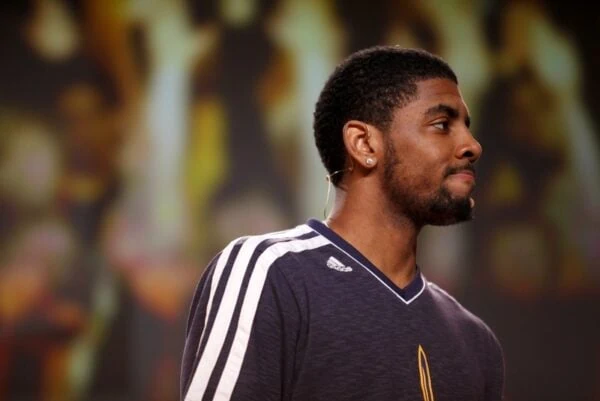
Kyrie Irving first publicly revealed an affiliation with a Native American tribe during a 2016 interview with ESPN's Rachel Nichols. Kyrie's mother was a Standing Rock Sioux and lived on the reservation before being adopted at a young age. His mother died when Kyrie was just 4 years old so Kyrie didn't have a connection to his tribal roots for most of his life. In 2021, he and his sister, Asia, officially became members of the Standing Rock Sioux Tribe in North Dakota, cementing their relationship with the Indian Nation.
Learn more here.
Who was the first Native American to play in the NBA?
Phil Jordon (Wailaki and Nomlaki Native American) was the first Native American to play in the NBA.
He grew up in Sumter, Washington. He never played Rez Ball but he did go on to play collegiate basketball at Whitworth College in Spokane. He was selected 42nd overall in the 1956 NBA draft. Though he was drafted by the Minneapolis Lakers, he began his professional career with the New York Knicks.
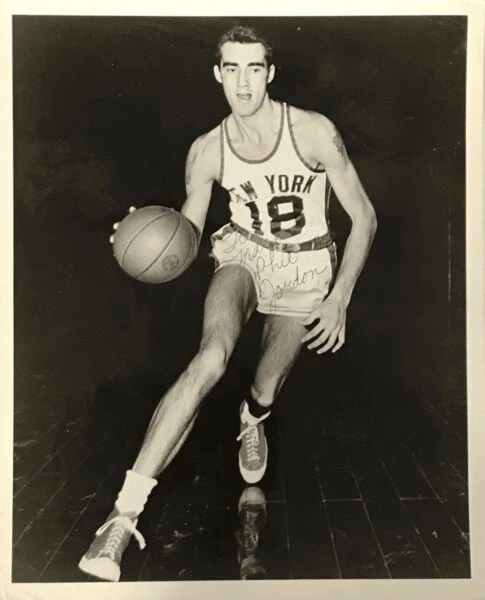
His mammoth 6'10 frame and natural grace were a welcome addition to the Knicks' roster. Jordon had a productive, if unspectacular, career, that peaked from 1959-61. During those two seasons, he played for three teams, averaging 13 points and 8 rebounds a game.
Willie Nauls, one of Jordon's teammates with the New York Knicks, spoke about him in this article:
He was as good as most of the big men in that era, except for the real outstanding ones like Russell and Chamberlain. But I think he was limited by his (early) competition… There wasn't very much local competition where he was growing up, as there is today. He had the physical frame and natural grace and ability to develop into a very competitive athlete.
Phil Jordon's Most Famous Game
Unfortunately, Jordon's most notable game as a professional was a game he didn't play in. On March 1, 2962, Jordon reportedly drank a whole case of beer in his hotel room, before going out on the town to continue drinking. The next day, Jordon was unable to play in the Knicks' game (the team cited “the flu” as the reason). Without their starting center, the already undermanned Knicks had a rough night. Nobody could guard the other team's center.
That center was NBA legend Wilt Chamberlain, who famously went on to score a record 100 points in that game. It's a record that still stands to this day and may never be broken.
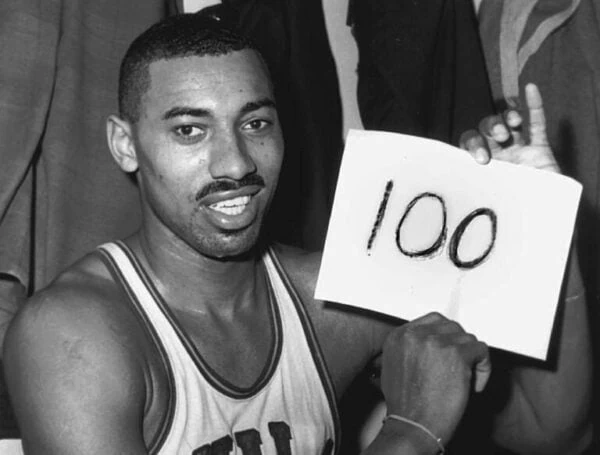
Who knows if Jordon's presence would've prevented Chamberlain from notching that historic performance? On the other hand, the Knicks' defensive performance couldn't have gotten much worse with Jordon in the rotation.
Have any Native Americans played in the WNBA?
Only four women of Native American descent have played in the WNBA.
They are:
Ryneldi Becenti (1997)
Ryneldi Becenti made history in 1997 when she became the first Native American to play in the WNBA. She debuted with the Phoenix Mercury in 1997, but was unable to find a more permanent home in the league. Becenti was also the first woman to be inducted into the American Indian Athletic Hall of Fame, largely on behalf of her play at Arizona State University, where she averaged over 7 assists a game for two seasons.
Tahnee Robinson (2011)
Tahnee Robinson (Cheyenne) grew up in Fort Washakie, Wyoming, playing Rez Ball on dirt courts. She too made history as the first player of Native American descent to be drafted into the WNBA when was taken by the Phoenix Mercury with the 31st pick of the 2011 draft. Despite being hotly recruited, Robinson struggled to claim a roster spot. The Mercury traded her to the Connecticut Sun, before she ended up playing overseas.
After her playing days, she began hosting the Rez Ball Camp on a reservation in Lame Deer, Montana.
Angel Goodrich (2013-2016)
Angel Goodrich was selected 29th overall in the 2013 draft. She started 16 of the 31 games as a rookie with the Tulsa Shock. She averaged over 4 points and nearly 3 assists per game, but washed out of the league after three seasons.
Shoni Schimmel (2014-2018)
Shoni Schimmel is easily the most accomplished Native American player in WNBA history. At 5'9, the guard was picked 8th overall by the Atlanta Dream in the 2014 draft. She had a very impressive first two seasons, making the All-Star team both years. She was even named MVP of the All-Star Game her rookie year.
Over four seasons in the WNBA, she averaged nearly 7 points per game while shooting nearly 37 percent from behind the 3-point line. She became the first Native American to play in the WNBA All-Star Game, and the first Native American to play in a WNBA Finals game.
Rez Ball Movies
Because of Rez Ball's interest in and beyond Native American communities, it's sparked interest among those in the entertainment industry. Several filmmakers have shed light on this cultural phenomenon.
Lebron James “Rez Ball” Movie
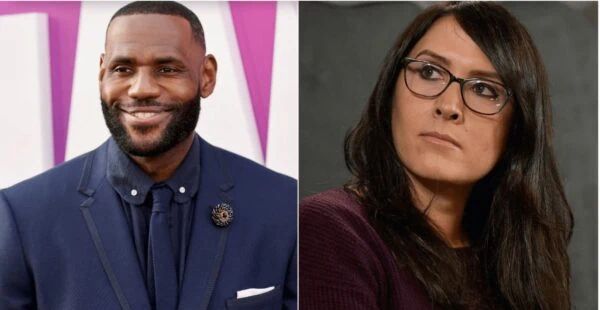
LeBron James’ SpringHill Company is teaming up with Navajo filmmaker Sydney Freeland to produce a film for Netflix called “Rez Ball.”
Freeland will direct the feature from a script she co-wrote with Sterlin Harjo, who with Taika Waititi co-created the FX series “Reservation Dogs,” for which Freeland wrote and directed episodes.
Freeland and Harjo are basing their film on Michael Powell’s sports novel Canyon Dreams, as well as his New York Times articles on Rezball. In his writings, Powell explores the world of hoops on Native American reservations.
Sydney Freeland described the cultural force that is Rezball:
[Rezball] is like high school football in West Texas. It has a fanatical following that few sports can rival. This is a story that’s commonplace on Indian reservations all over the US, but most people aren’t even aware it exists. What we want to do is bring people into our world, to tell a story about the people and places we know, and what better way to do that than through a sports movie?
“Rez Ball” is being described as “Friday Night Lights” meets “Hoosiers.” The film, according to the project’s description, “follows the Chuska Warriors, a Native American high school basketball team from Chuska, New Mexico, that must band together after losing their star player if they want to keep their quest for a state championship alive. It’s an all-American underdog story about Navajo kids and coaches told from the inside-out.”
The movie will be shot in New Mexico, including on reservations, with permission from tribal nations. The movie is slated for a late 2022 or early 2023 release date.
“Basketball or Nothing”
“Basketball or Nothing” is a 2019 Netflix documentary series filmed on Navajo Nation. The series showcases the drama and intensity of Rez Ball at Chinle High School Basketball.
Rez Ball Books
Canyon Dreams: A Basketball Season on the Navajo Nation by Michael Powell
Canyon Dreams chronicles the challenges of a Navajo high school basketball team, including the unique struggles facing players growing up in poor reservation conditions. Powell details the drama, intensity and unity on display in reservation basketball in this gripping novel, on which the upcoming film “Rez Ball” is largely based.
Featured image credit: Netflix
